Scotland is a country of green, which spreads everywhere in all possible shades. A lot of gorges and valleys are filled by lakes of glacial origin, which the Scots do not call a ´lake´ like their English counterparts, but a ´loch´. The colours of the uplands are interspersed with extensive moorland. On the plains of the Scottish Highlands we can see freely grazing herds of sheep – many of them are living quite wildly and can be seen even unshorn in the summer. This beautiful nature is watered every day by rain that is not a problem for the local people. In this country, I was a traveller with many roles – a tourist, a migrant worker, a wwoofer. You might ask what a wwoofer is. WWOOF (World Wide Opportunities on Organic Farms) is a network of connected ecological farms all around the world, which are looking for volunteers for short or long term assistance. The WWOOF arose in the United Kingdom over 40 years ago. At present, this trend is developing strongly in the Czech Republic and, among travellers, adventurous souls are becoming increasingly popular. According to the rules of WWOOF farms you work 6 hours a day in exchange for food and accommodation.

First of all, finding a farm for this volunteer experience in Scotland was certainly not easy. It was necessary to contact at least 30 farms before someone replied to me and I could start. Secondly, plenty of wwoofers had reserved a volunteering place a long time before arriving and it seems that Scotland is a very popular and sought after destination. So, my first stop was Tombreck farm, which is located under the mountain of Ben Lawers in central Scotland and adjacent to the nature reserve with the same name. This small organic farm is now almost a legendary farm and is briefly mentioned on the English Wikipedia. To some extent, it is a museum of agricultural livelihoods of the local area, which has now been replaced by tourism. The farm is spread over 97 hectares and extends along the slope, which is partly covered with grassland and a section of forest. It touches a huge lake, Loch Tay, to whose shores we can get after we pass through the ´fairytale woods´, in which is almost everything is left to the mercy of nature. The residents of farms are likeable, alternative people who have come to the farm more for pleasure than to supplement their livelihood. Many of them commute to their day jobs, in ´civilization´, which is easily accessible from the farm. However, the main landlords of the farm, the local natives Tober and Sue, make a living from what they grow or sell in their farm shop. The farm also has an organic grocery which provides them some financial income too. Because the farm is situated off the main road, the selling of produce does not present any problems, such as, for example farmers from remote areas in Slovakia. On the farm they kept ducks, chickens, sheep, two horses, two New Zealand pigs – for which is set aside a grove as a large nature enclosure. Actually, the pigs on the farm live in a semi-wild manner, as well as the other animals. The sheep and horses graze freely on the vast grasslands and even chickens are let out in the afternoon onto the open meadows.
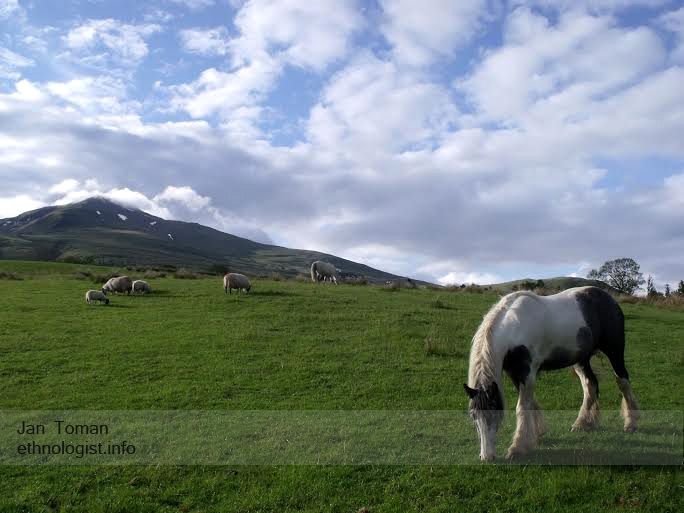
The wwoofers live there in immobile static caravans, which is a quite solid form of accommodation from a backpacker´s view. The complex of Tombreck farm includes a large wooden building called the Big Shed, which hosts various cultural events or workshops. There is also a large kitchen, where sometimes farm products are processed. Moreover, one of the inhabitants of the farm community has a massage studio in the Big Shed. By the time I came to this farm, the political campaign for Scottish independence was in full swing, because the referendum was approaching. The residents of Tombreck farm were for Scottish independence. I myself really enjoyed the unique sense of ´freedom and independence´ just from staying on this unique farm. I got up in the morning, opened the door of the caravan, before which was waiting the bearded collie Tomper, who wanted to play with me. I had a huge portion of ´porridge´ for breakfast and then I walked to the valley to collect potatoes. I dug up the potatoes at a leisurely pace, brought them up on my back and made a Czech dinner from them; ´bramboráky´ (some kind of potato pancakes) for my Scottish friends. Never checking the time and completely detached from the reality of the daily rush of civilization – I was free. I was excited so much by the work on the Tombreck farm that I did not think about the fact that I was not getting any money for this work. I went calmly and voluntarily to feed the pigs at evening and I enjoyed walks on the green fields between the flocks of sheep during the sunset. Is it possible to see a man in a kilt on the farm, which is not so common in Scotland anymore. The Scottish national dress, the kilt, now only has a rather ceremonial importance. To sum up, the overall atmosphere of the farm I would personally describe as something between the swinging 60s and the First Republic´s countryside in former Czechoslovakia.
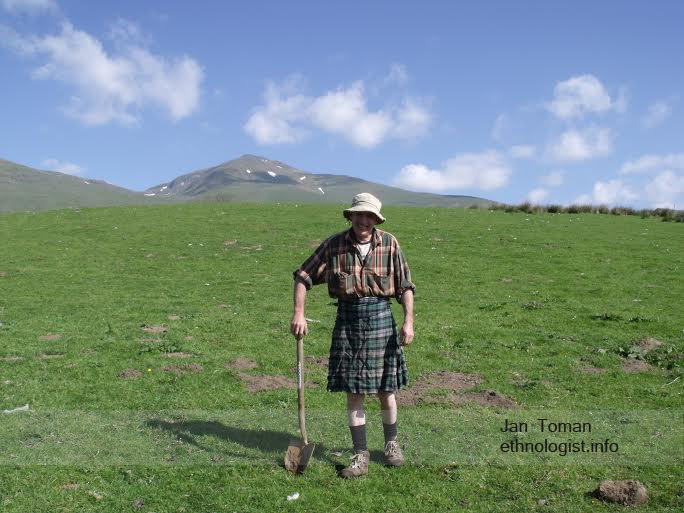
It is sometimes said, that wwoofing is a subculture. In fact, all permaculture farms and organic farms are one big subculture. I heard an analogy about wwoofing as squatting or the classic image of wwoofers as hippies. In contrast, I was convinced during my stay at Tombreck farm that this kind of life is first of all about big responsibility. The people who own a farm need not travel so much, because they have to take care of the farm and animals. Additionally, unlike the aforementioned subcultures, wwoofing is definitely more creative. The wwoofers have found a very interesting way of escaping from the consumer society, but, on the other hand, they are little bit idealistic about the pre-consumer society, which is the core of their philosophy. In the days when people had to toil hard on their farms, which were their main and only source of living, the wwoofers would not have too much space for enjoyment. However, wwoofing is not only about enjoying yourself. It is also about work and new experiences which enrich the mind, heart and soul. So, the wwoofers help shape some new post-consumption ecological society of which I am a big fan.
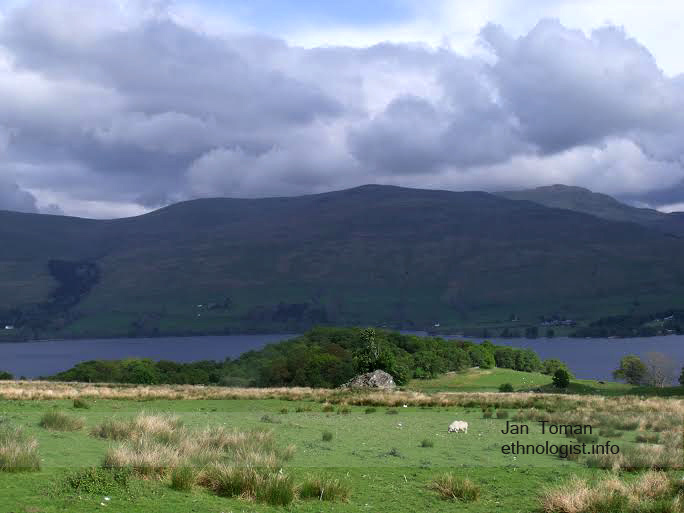
My next stop was the town of Campbeltown lying almost at the very tip of the peninsula of Kintyre on the west coast of Scotland. Here again I found wwoofing in a slightly a different way. I stayed on a farm with a bachelor named David, who keeps cows, of the breeds Aberdeen Angus, exclusively for meat. His company is comprised of his 40 head heard of cows that graze in large natural enclosures and approximately seven cats running everywhere around his farm. This quirky maverick gives access to the wwoofers strictly as vacationers. He sees them as the children he never had. Before me, he hosted one wwoofing girl, a big football fan from Germany, so he bought, for the first time, a television, in order that she could watch the Football World Cup. Nevertheless, he did not have to buy anything special for me (and I would not have asked him), but he took me on trips or to dinner at several restaurants in Campbeltown. He cared a lot about me and always asked if I was satisfied with the work I was doing. With him I also experienced the adventure of chasing cows but not on horseback but by tractor, which was even funnier. Aberdeen Angus cow breeds have the advantage of being born as very small calves at birth and do not need a helping hand. When he showed me for the first time a pregnant cow that would soon give birth, I expected that I would have to help pull the calf by foot. Fortunately, the next morning he greeted me with the words ´the calf was born´ and they were grazing on the pasture together, calf with mother. I have also tried some forestry work because a part of his farm is a pine grove which I helped him to prune. David had a completely opposite attitude to the Scottish referendum for independence – opposite to the Tombreck farm. He was basically for continuing The United Kingdom and his attitude was demonstrated by the Union Flags which were hoisted everywhere. Surprisingly, the flag flew on his car when we went together to explore the Scottish nature and surrounding countryside. There was also a legendary British musician, bassist and singer of The Beatles, Sir Paul McCartney, in the place where the farm is located. Here he recorded the hit Mull of Kintyre with his new band The Wings after the breakup of The Beatles in this places. I was also walking on this beach Mull of Kintyre, but without the accompaniment of Scottish bagpipers, who dominated the video. Overall, in these parts of Scotland I felt rather a half ´British´ and half ´Scottish´ atmosphere.
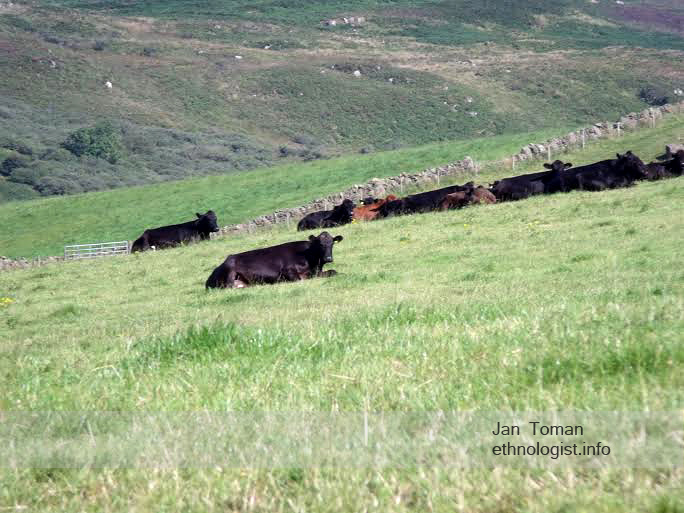
Through wwoofing you will have so many different experiences. For example on one of the family farms in the north of Scotland, near to the town of Inverness, I had to weed a meadow with my own hands for one week, day after day. Well, no other interesting work had come up. The family, who I worked for there, took me to a music festival where I had the unique opportunity to see and hear one of the biggest legends of British music, Welsh singer Sir Tom Jones.

In addition to wwoofing I did some paid work in Scotland. Any man would be tipsy with delight when he receives a huge caravan, virtually the entire 3+1 (3 rooms + one kitchen) only for himself, like I did from the hotel where I worked. On the other hand, the smile quickly disappears when you have to work a 12 hour shift in the kitchen. Finally, my smile was back, when I heard an explanation of how to operate a dishwasher from an American woman from Los Angeles – originally a social worker. She came to have a better life in London, but finally became a housekeeper in a hotel located in the Scottish Highlands. Moreover, I had a good feeling that there I had earned my first big money.
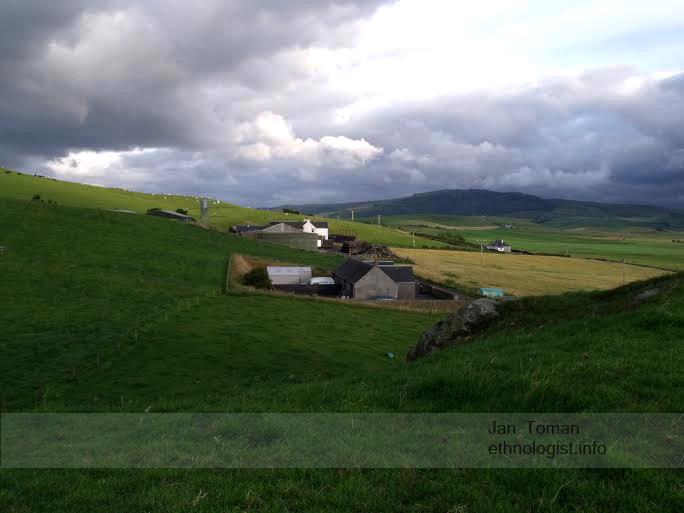
As well as working in Scotland I also travelled through the country and I explored the culture and nature´s treasures. Since my childhood I used to dream about meeting Nessy in Loch Ness. Nevertheless, the Loch Ness monster is somewhat of an outdated myth. Between 2002 and 2003 the British station BBC undertook research that concluded that the creature Ness does not exist. It even showed that the most famous photograph from 1934 with the ´neck of plesiosaur´ protruding from the lake was a forgery. This fact does not impede the appearance of images of Nessy on postcards to delight the supporters and fans. The legend of Loch Ness and its creatures is now an important component of local tourism and shops with souvenirs are dominated by Nessy and other pictures of dragons. I spent one night on the shore of this lake, but unfortunately instead of Nessy I was welcomed by swarms of flies – in Scotland they are known as ´midges´. There are many of them and they are everywhere where is even a little bit of moisture…

A more interesting lake is the largest lake in Scotland, Loch Lomond. Around it you can take a very nice route and see a beautiful panoramic view. On the photo you can see the lake from Conic Hill, towering above the village of Balmaha. Balmaha is an ideal starting point for such a longer trek. During this trip I experienced very typical Scottish slightly rainy weather, known as ´drizzle´. Surprisingly, I also encountered a rather unusual heat for this country, which is said to accompany the last two years. Perhaps in climbing the mountain Ben Vorlich I was so hot, as before I was in Turkey. I enjoyed the outlook over the whole country from the highest mountain in the United Kingdom Ben Nevis (1344 m) – also in sunny weather. So, I was only in shorts and a T-shirt and then wading through snow at the summer.
Furthermore, Scotland is a country for lovers of castles and ruins and among them I also belong. So, I did not fail to visit castles like Dunvegan Castle, filmmakers usually seek out Eilean Donan Castle or Blair Castle, where I had the honour of seeing the show of the only one legal private army in Europe, The Atholl Highlanders, who are based at the castle.
The most beautiful places of the trips was the Isle of Skye, which is one of the most spectacular places in the world that I have ever visited. It name comes from the Gaelic and means ´winged´. By this old Celtic language is commonly spoken by a third of the population of the island. There are even bilingual schools, where children can choose whether to be learn in English of Gaelic. It is good to explore whole island – around the whole round. The view from the narrow roads on the majestic granite massifs which stand out sharply from the sea to the 900 m is breath-taking. We cannot sort out day without rain on this island, but it also creates the magic spirit of the local nature.

I have never forgot on the moments of my journey around the Scotland. The deepest impression I had from my wwoofing experiences. During my staying in organic farms I have known a completely new alternative lifestyle and I found some important connection with Scottish countryside. I was able to perceive the values that are difficult to describe only by words. And where I am going to travel next time as a wwoofer? Let me surprise you… 🙂
Important links:
Federation of Wwoof organizations
Scottish music:
Albannach – Performance in Edinburgh Fringe Festival
Albannach – The Fire and Thunder of Scotland
Clanadonia – Ya Bassa, Edinburgh Fringe Festival
Loch Lomond – an old Scottish folk song
Old Blind Dogs – Scottish folk ballad
Editorial note:
Translated from Czech to English by Barbora Sajmovicova.